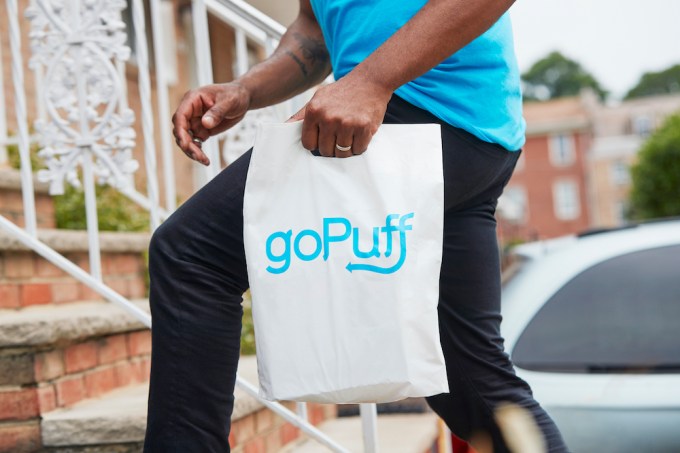Editor’s note: Get this free weekly recap of TechCrunch news that any startup can use by email every Saturday morning (7 a.m. PT). Subscribe here.
Why are there so many tech IPOs right now? Startups are finding that they can get higher valuations from public markets than private ones these days, because so many public investors want to put serious money in tech. Also, the lure of the future, the benevolence of the Fed, the retail investor boom, the sheer number of unicorns that have been waiting for any decent moment to go, the new ways a company can go public… these are some of the reasons Alex Wilhelm found after reviewing the latest listings and quarterly data about tech in public markets.
Various political and economic turmoils threaten to end the run, but the impact to the startup world has arrived. Consider it for a minute before the newsletter dives into stocks, SPACs, emerging industries and other useful startup news.
From this IPO boom, there’ll be another wave of startup employee wealth flooding into adjacent real-world spaces, but spread more broadly outside of the Bay Area than the days of Facebook and Twitter IPOs. Some of those employees will become investors and maybe founders, and the now-public startups will replace those positions with big-company people. The dynamics around tech hiring will be further reshaped in surprising new ways, all combined with the other changes happening like remote work.
Today, if you’re founding a startup now, you can now confidently chart new ways to build your company long-term that previous generations of founders could barely imagine.
This coming decade, we might see a startup go public that raises from pre-seed rolling funds first, pulls in newly legalized crowdfunding, matches with the right VCs from among the thousands that have are operating these days — or perhaps the startup raises debt because it’s doing that well. It could stay private as long as it wants using the various financing and secondary market possibilities that have been figured out over the last decade. Then, when it is ready to go public, it could choose between traditional options, the perfect SPAC and a direct listing, and keep the shareholder pool in favor of the true believers who have been with the company over the course of the journey.
This current group of IPOs also demonstrates something else. Tech is no longer defined as some profitless, highly valued consumer tech startup in San Francisco. It can come from anywhere, it can solve practical problems, it can make real money, and it can keep building and growing — provided you’re okay with some ongoing risk. No wonder public markets like tech these days.
Take a look at Root Insurance, an insurtech unicorn that has already helped define the Columbus, Ohio startup scene. It’s a “startup Rorscach test,” as Alex details this week about its new IPO filing. “You can find things to like (improving adjusted margins! revenue growth!), and you can find things to not like (spiraling losses! negative margins!) very easily.”
Here’s more from the Extra Crunch article:
It appears that the tailwind that many insurance providers have seen during COVID-19 has provided Root with a nice boost (driving fell during the pandemic, leading some insurance providers to return premiums.) Root is taking advantage of the moment by filing when it can show sharply improved economics.
That’s smart. But how do those improved economics bear out in traditional accounting? Let’s find out:
- Root’s revenue has skyrocketed from $43.3 million in 2018 to $290.2 million in 2019. In the first half of 2020, Root managed $245.4 million in revenue, up 135.73% from what it managed in the first half of 2019.
- Root’s losses have also shot higher, from a net loss of $69.1 million in 2018 to $282.4 million in 2019. The startup has managed to consistently lose more money over time. This was also true more recently, when its H1 2020 net loss of $144.5 million dwarfed its H1 2019 loss of $97.0 million.
The other filing this week is for Affirm, which provides a point-of-sale credit for customers (without all the tricks of credit cards). It’s also a symbol of how innovation works across the decades, for those future founders who are studying the IPO experiments of unicorns today.
The company is a high-flying unicorn with a practical purpose from serial entrepreneur Max Levchin, who has also helped shape the concept of the modern startup — from cofounding Paypal and making numerous angel investments over the years, to Slide, a profitless, highly valued consumer tech company in San Francisco a decade ago. It’s not widely understood outside of tech, Slide and other social media companies helped pioneer the growth and engagement techniques that subsequent startups applied across SaaS, e-commerce, fintech and real-world sectors. Today, Root and Affirm and many of the other companies in this era of IPOs are standing on the lessons of those years.

Image Credits: Getty Images
SPAC growing pains
Special Purpose Acquisition Companies are sure to provide valuable lessons, as a growing group of startups use these investment vehicles to ease into public markets. Here’s the latest look at the action, starting with this disturbing quote that Connie Loizos got from one expert this week.
According to Kristi Marvin, a former investment banker who now runs the data site SPACInsider, she’s having, and hearing about, conversations with a much wider range of people interested in launching SPACs than in past years — and not all of them are necessarily equipped to manage the vehicles.
“You ask, ‘Have you ever acquired a company for $500 million or more? Do you have operating experience in the vertical that you’re targeting? Do you understand the reporting requirements involved?’ Often,” she says, “the answers are no.”
That was in the context of a controversial former Uber executive starting a SPAC; Connie also looked at gender representation in this emerging slice of high finance. Like other parts of that world, the people involve are almost entirely men (which is also continuing to be the case in startup funding, actually, Alex reports).
Meanwhile, Catherine Shu examined how troubled electric vehicle startup Faraday Futures is approaching SPAC plans, while Alex took a closer look at the challenges and opportunities facing Opendoor.

Image Credits: Getty Images
The future of mobility
Our annual conference on mobility and the future of transportation happened online this year, which means we have lots of easily accessible conference coverage to share for readers (and for Extra Crunch subscribers). Here are a few key headlines to help you focus your clicks:
Quarantine drives interest in autonomous delivery, but it’s still miles from mainstream
Transportation VCs suggest frayed US-China ties will impact mobility markets (EC)

Image Credits: Getty Images
Investor Surveys: APIs, Helsinki and Amsterdam
“I am surprised at how open companies are to a SaaS API for something as critical as cybersecurity,” Skyflow founder Anshu Sharma explains about the explosion of SaaS companies, and specifically API service providers like his company. “While I have spent over a decade in SaaS including some very large deals during my time at Salesforce, the scope of the projects by large companies including banks and healthcare companies is simply beyond what was a possibility just a few years ago. We have truly moved from ‘why SaaS’ to a ‘why not SaaS’ era.” Alex and Lucas Matney surveyed a range of top investors and founders in this exploding niche, and you can read the full thing on Extra Crunch.
Elsewhere in investor surveys, Mike Butcher checked out the Helsinki startup scene and has another about Amsterdam in progress.
Across the week
TechCrunch
Nobel laureate Jennifer Doudna shares her perspective on COVID-19 and CRISPR
Podcast advertising has a business intelligence gap
Standing by developers through Google v. Oracle
Dear Sophie: Now that a judge has paused Trump’s H-1B visa ban, how can I qualify my employees?
A clean energy company now has a market cap rivaling ExxonMobil
Extra Crunch
Understanding Airbnb’s summer recovery
Accel VCs Sonali De Rycker and Andrew Braccia say European deal pace is ‘incredibly active’
4 sustainable industries where founders and VCs can see green by going green
Six favorite Techstars startups ahead of its next rush of demo days
To fill funding gaps, VCs boost efforts to find India’s standout early-stage startups
#EquityPod
Hello and welcome back to Equity, TechCrunch’s venture capital-focused podcast (now on Twitter!), where we unpack the numbers behind the headlines.
This week Natasha was on vacation, so Danny and your humble servant had to endeavor alone. She’s back next week, so we’ll be back to full strength as a collective soon enough.
But even with a depleted hosting crew, we had a mountain of news to get through. And to joke about, as Danny was in the mood for a laugh. Here’s the rundown:
- Reddit co-founder Alexis Ohanian’s New Venture Fund Invests in Disposable Camera App: Danny and I are arbiters of what is cool, so we were the perfect pair to discuss influencers and new social applications. This one is actually neat, and Ohanian’s inclusion in the investment viz his new fund was noteworthy.
- Zira raises $3.1M for its shift-scheduling service that helps manage hourly workers: This is a round that I covered, looking into Zira.ai and its product. Our take? It’s neat, but operates in a competitive market.
- Shogun raises $35M to help brands take on Amazon with faster and better sites of their own: This is a similar story. A neat company with a neat product in a space where there is proven demand (TAM, in other words), and competition.
- Unqork’s $207M Series C underscores growing enterprise demand for no-code apps: Another round worth mentioning is the Unqork deal. Unqork is a no-code service that helps other businesses create apps for their companies. It’s growing like a weed, and is thus something worth knowing a bit about.
- Mmhmm, Five-Month-Old Video Startup Making Virtual Meetings More Fun, Raises $31 Million Pre-Launch: Yes, mmhmm has raised more money, and, we’re excited to learn, could be launching this very month.
- Remotion raises $13M to create a workplace video platform for short, spontaneous conversations: Following the Slack news, this round stood out to us. Who will build the remote work comms platform of the future that people like to use?
- And then there was a host of other stuff to get through, like the FirstMark SPAC news, Root’s impending IPO and more on Airbnb’s impending public offering.
That was a lot. We did our best. Hugs and chat with you next week!
Equity drops every Monday at 7:00 a.m. PT and Thursday afternoon as fast as we can get it out, so subscribe to us on Apple Podcasts, Overcast, Spotify and all the casts.
https://ift.tt/30V2iXo Public investors stay in love with tech, as Root and Affirm file to IPO https://ift.tt/3nF0TOo



























